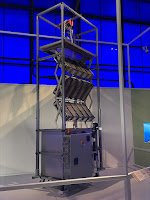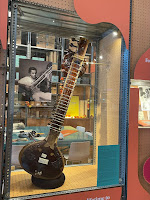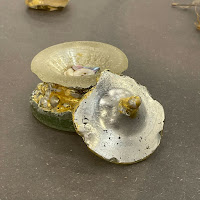Exploring Lines: The Drawings Of Sir James Thornhill

Small exhibition at the Victoria and Albert Museum of drawings by the 18th century artist Sir James Thornhill. I mainly know Thornhill as the artist behind The Painted Hall in Greenwich so it was nice to learn a bit more about him and see more of his work. He specialised in murals and was the only British artist to challenge the Europeans for such commissions. I was interested to read the story of his designs for Moor Park in Hertfordshire and to see the drawings for his inset paintings. He fell out with the patron who removed Thornhills pictures and replaced them with new ones by an Italian artist. The show included designs for a lunette in St Paul’s Cathedral, Chatsworth House and the Great Hall at Blenheim Palace and pointed out that he also designed stage sets. I guess the murals were actually stage sets for living in. Closes 22 July 2022




















